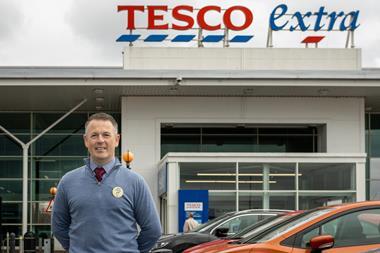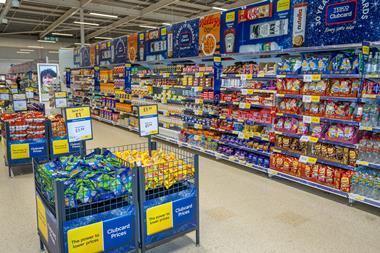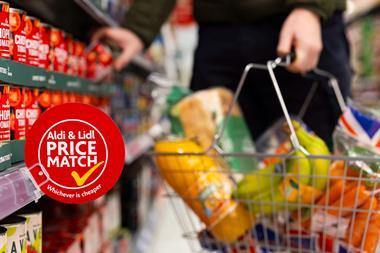Tesco and Sainsbury’s are generating big bucks from sale and leasebacks – but could the Southern Cross débâcle and proposed new accounting rules spoil the party? Simon Creasey investigates
It has a global real estate portfolio worth £36bn.
Over the past five years, it has generated more than £5bn from the sale and leaseback of property assets delivering profits of £1.3bn. Going forward, it’s targeting more than £1bn divestments a year and annual profits of £250m-£350m. It is the UK’s biggest property company. But it isn’t British Land or Land Securities. It’s Tesco.
Having become a property player by default, the UK’s biggest supermarket chain is now a property player in its own right one that’s become adept at deploying even the more sophisticated tricks of the trade. Take its sale and leaseback strategy. At its latest preliminary results briefing, Tesco CEO Philip Clarke described it as a “clever piece of financing”.
Not half. Instead of allowing its equity to be tied up in bricks and mortar, Tesco is effectively releasing it and putting it to good use elsewhere in the business. As Clarke put it: “We’re taking mature assets, wherever they are in the world, realising the development profits then putting them into less mature assets that are going to make a good return in the future.”
So successful has the strategy been for Tesco that it plans to start adding overseas properties into the mix for the first time. Meanwhile, Sainsbury’s, another long-time exponent of sale and leasebacks, is also poised to launch a new property divestment programme. It is eyeing £250m of deals in 2011/12 alone and in its recent preliminary results it revealed that over a 12-month period it had generated £275m from its property sales.
So why are the supermarkets ramping up their activity now? And given the problems Southern Cross and Woolworths experienced with sale and leasebacks, are they right to put such faith in the financial tool especially now they face the prospect of new accounting rules that could seriously constrain its use?
Sale and leasebacks are a relatively recent phenomenon. It was only towards the end of the 1990s that large corporations starting selling their commercial property assets and leasing them back in large volumes to free up capital.
There were, of course, risks involved (selling too much of your portfolio, for instance, or agreeing rents that turned out to be higher than the market rate), but the potential benefits to the balance sheet were seen to outweigh this. “Real estate assets owned and on the balance sheet lock up capital that dilutes return on equity from the retail core,” explains Matthew Hill, head of real estate at AlixPartners.
Sainsbury’s and Tesco were among the first supermarket chains to jump on board. In 2000, Sainsbury’s, which owned 65% of its property on a freehold basis, raised £566m from its first two sale and leaseback deals. That was relatively small beer, though, compared with the five-year, £5bn sale and leaseback strategy unveiled by Tesco in 2006.
Tesco is seen as the lead player due to the sophisticated way in which the business structures and releases deals to investors, says Hill. “They’re doing sale and leasebacks in a controlled manner on their terms,” he explains. “Other food retailers are apparently reluctant to dip a toe in this particular pool. Tesco is a beacon example what they do, and the way they do it, is what others could, and perhaps should be doing to drive shareholder value performance.”
Now the retailer, which owns 70% of its property on a freehold basis, hopes to interest investors in its overseas properties. The timing couldn’t have been better. Global property markets are still devastated following the 2008 crash, there’s not much grade A investment property to buy, institutions still want the diversification that property exposure gives, but there’s precious little available that passes all the strict risk criteria. In short, although the appetite for sale and leasebacks on overseas properties is untested, there is a lot of demand generally.
As there no doubt will be for the impending release of Sainsbury’s next tranche of sale and leaseback stock. According to a well-placed property source, “there is a pipeline in place for the next five years of sale and leaseback activity.”
Sainsbury’s won’t be drawn on the details, but speaking at the recent prelims, CFO John Rogers told analysts: “In relation to operating leases again we gave guidance of £250m or so of sale and leasebacks this year 2011/12. That will entirely depend on the market conditions and whether we can sell those assets at the right price. If we can’t we won’t.”
GL Hearn’s corporate director Grant Woollard doesn’t foresee the company struggling to find takers. “Supermarket sale and leasebacks are seen as attractive investments in the current market with investors attracted to the solid income streams from substantial companies for a relatively long length of time,” he says. “There is very little supermarket stock in the investment market, which further enhances the attractiveness to investors.”
Yet neither Asda nor Morrisons have followed Tesco and Sainsbury’s lead. “We don’t do sale and leaseback deals for various reasons” is Asda’s only comment, while Morrisons says it has “no plans to do sale and leaseback at the moment”. Both companies own 80% to 90% of their property portfolio freehold and could potentially free up a lot of capital to invest into new store openings.
Why the lack of interest? Southern Cross’s well-documented problems won’t have helped. The care home provider was left with a property bill rising faster than revenue after agreeing to a fixed annual rent increase of 2.5%. And there’s another example even closer to home: a major factor in Woolworths’ downfall was parent company Kingfisher undertaking a sale and leaseback on Woolies stores, which exposed the retailer to a minimum 2.5%-a-year increase in rent for 25 years so even if rents fell elsewhere on the high street, Woolworths’ contined to rise.
The mults are unlikely to get caught out in the same way. They typically negotiate fixed uplifts of as little as 2% a year or they link the initial rent agreed to RPI and then cap and collar that at 0-4%. In addition Tesco has built in buy-back clauses that allow the company to buy its stores back from investors after a pre-agreed period of time has expired typically five to 10 years.
However, Asda and Morrisons could be struggling to overcome a common mental hurdle that comes with selling off the crown jewels. “One of the chief concerns is the thought of giving up ownership and control of the pitch,” says Hill. “Other concerns lie in understanding the cost-of-capital aspects. All these issues are readily addressed through special lease structures and there are well-established contract structures that have been tried and tested.”
The other possibility is that these companies are simply playing the long game in light of a new lease accounting standard due to be published this month by the International Accounting Standards Board. At the moment operating leases are off the balance sheet, which allows companies to spruce up their balance sheet by eliminating mortgage debt obligations through finance vehicles such as sale and leasebacks. However, if the standard comes into force, tenants have to place the obligation to pay rent over the entire lease term on their balance sheets as a liability, which would “kill the whole sale and leaseback thing for companies like Tesco because it brings all of the debt back on to the balance sheet”, explains a property insider.
Even if the likes of Tesco do find a way around the new accounting rules, some property pundits think that the appetite for supermarket sale and leaseback deals will eventually run out of steam. “Go back five years and supermarket sale and leaseback deals were as rare as rocking horse shit as a result there was a lot of pent-up demand,” says one property agent. “Tesco rightly took advantage of that and used its covenant being the strongest to get very good pricing, but everyone’s got one now, everyone’s coffers are full of Tescos.”
Waning investor appetite is bad enough. The Southern Cross débâcle will hardly have reassured retailers. And if changes to the accounting rules do come in, the latest wave of sale and leaseback activity could be rather shorter than hoped.
For sale
Tesco Intends to generate £1bn annually from sale and leaseback deals, creating profits of £250m-£350m per year. Overseas shopping malls will be included in property transactions for the first time
Sainsbury’s Aiming to raise £250m from sale and leaseback deals in the financial year 2011/12



















No comments yet